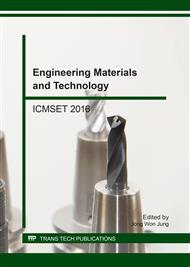p.174
p.179
p.184
p.192
p.198
p.209
p.214
p.220
p.225
Real-Time Monitoring of the Dispersion Stability of Poly(Carbonate Urethane)s Using the Turbiscan Technique
Abstract:
Waterborne poly(carbonate urethane) dispersions (WPCUDs) have received much attention from both academia and the chemical industry due to their potential applications in high-performance volatile organic compound-free coatings and adhesives. Commercially, both the long-term stability and the mechanical properties of WPCUDs are extremely important because these are closely related to the storage life of the product. This study provides a detailed, real-time investigation into the dispersion stability of WPCUDs. Various WPCUDs with different ionic contents and containing polyols of different molecular weights were prepared, and their dispersion stabilities were monitored in real-time using Turbiscan measurements. The effect of temperature and concentration on dispersion stability was also examined. The thermal and mechanical properties of WPCUD were characterized by thermogravimetric analysis, differential scanning calorimetry, and universal testing machine, and the data were correlated to the dispersion stability data.
Info:
Periodical:
Pages:
198-205
Citation:
Online since:
June 2017
Authors:
Keywords:
Price:
Сopyright:
© 2017 Trans Tech Publications Ltd. All Rights Reserved
Share:
Citation:


